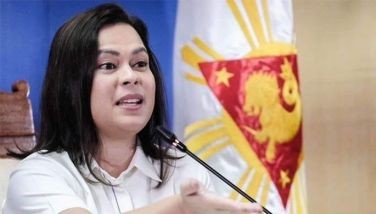Comelec: Want a manual recount? Shoulder the cost
MANILA, Philippines - Commission on Elections (Comelec) Chairman Sixto Brillantes Jr. is amenable to a manual recount provided the requesting party shoulders the expenses.
In an interview, Brillantes said the Comelec would compute the cost and payment should be deposited in the Comelec’s bank account.
“The cost may be higher now. Maybe P200 million,†he said. “They just have to deposit the amount and we will re-open everything.â€
When Interior Secretary Manuel Roxas II had wanted a recount of the results of the vice-presidential race in 2010, the estimated cost was P153 million, Brillantes said.
Malacañang believes a manual recount is not needed as the May 13 elections were peaceful and credible.
Presidential spokesman Edwin Lacierda said: “Not all of our local officials won. Isn’t that proof enough that the elections was credible? If we wanted, we would have preferred that we sweep the entire slate, but we did not.â€
He made the statement a day after Tanggulang Demokrasya and other multi-sectoral groups urged the Comelec to manually count ballots in 78,000 polling precincts.
They suspected the results of the May 13 senatorial and local elections might not have reflected the true will of the electorate.
However, Lacierda said: “It’s obvious that the people have spoken. The people have spoken and chosen the senators-elect. The people have also spoken and chosen the local candidates who... were not necessarily Liberal Party.â€
Lacierda said the poll body is now in the process of doing a random manual audit as required by law.
“So that is something that we will leave with Comelec to decide, but they are doing what is required under the law,†he said. “We did not win the entire slate; we did not win in the local elections, how much more proof do you want as to the legitimacy of these elections? People would like to question the election, let them do that.â€
Lacierda said there seems to be no sense in any manual recount as it’s very clear that the people have spoken. “The people have accepted the votes,†he said. “The people have accepted the 12 as legitimately elected by them. So the people have spoken and that’s it.â€
Adolfo Paglinawan, a political activist and Convenor of the Solidarity for Sovereignty, said massive poll discrepancies included the pre-programming of election results.
“The startling revelation towards the end of May 2013 that the 16 canvasses for the 2013 senatorial elections revealed a 60-30-10 linear pattern throughout the country started a nationwide debate that could not be confined among information technology practitioners and professors of mathematics and bloggers,†he said.
“That nine Team PNoy and three UNA candidates were winning was not at all alarming because that was what the final Social Weather Stations and Pulse Asia surveys suggested. “What was controversial was that it was a most unlikely event considering the ethnic fractiousness of the Filipino voting population and the archipelagic nature of the country’s geography.â€
The votes appeared like a template, from Aparri to Jolo, for the first time in the history of Philippine elections, Paglinawan said.
- Latest
- Trending




























